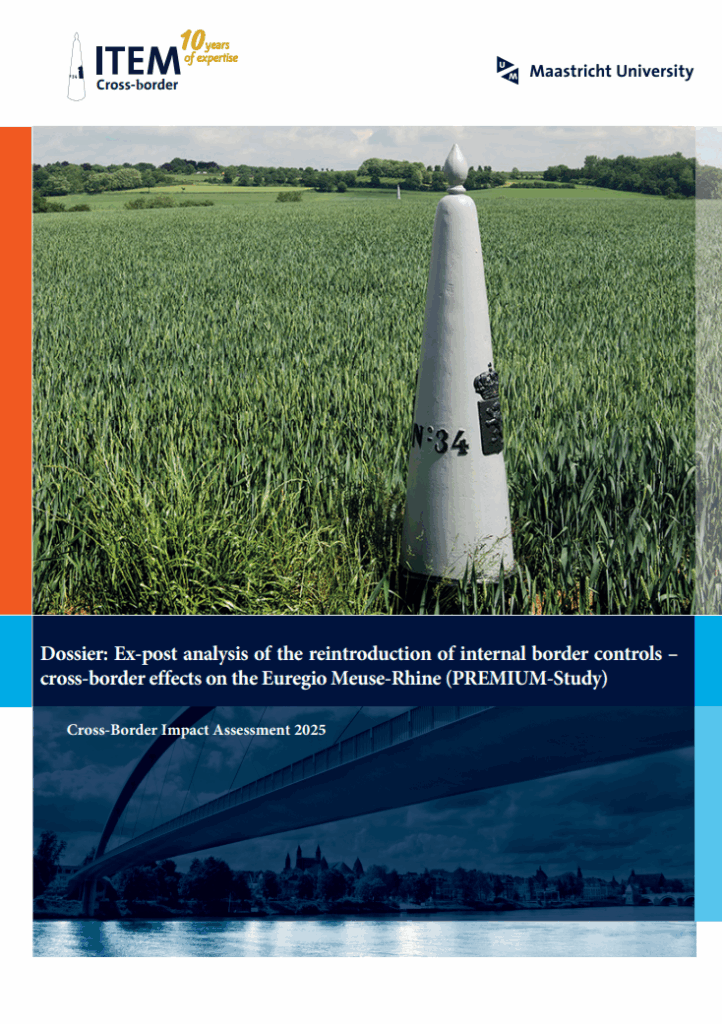On 12 and 13 June 2025, the meeting of the Benelux Parliament was held in Luxembourg. The plenary session was dominated by the 40th anniversary of the Schengen agreements. Several experts were invited to this, including ITEM. ITEM researcher Martin Unfried contributed to the thematic debate on the Schengen agreements in the light of current challenges and the role of the Benelux countries in them.
In his presentation, Martin Unfried stressed that 40 years of Schengen should also be seen , above all, as a success story for Europe’s border regions. Border regions have benefited greatly from the removal of border controls. This allowed an integrated labour market to emerge in several cross-border regions – such as in the Grande Région around Luxembourg. Although several border barriers still exist at Europe’ s internal borders and much can and should be done to reduce the disadvantages vis-à-vis other regions , border controls were not part of it until recently. While the principle of open borders was taken for granted for 40 years, that is no longer the case today. This should be seen as a threat to border regions. Martin Unfried therefore made the plea that member states fulfil their obligation to make adequate assessments of the potential negative consequences of border controls. In summer 2024, the rules of the revised Schengen Convention came into force, with more explicit safeguards for border regions. It may even qualify as a mandatory border effects test (see also the 2024 Border Effects File in this regard). In this context, member states should also define cross-border regions on their national borders in coordination with neighbouring countries. In the past six months, both issues have not happened enough. In notifications to the Commission, member states should now in effect interpret potential border effects as part of the proportionality test for the introduction or extension of border controls. In practice, however, we see too little of this. The Commission should also play a more active role here.
After all, it is already evident that there are negative impacts at the border. Ongoing ITEM research shows that mainly on the German border, border controls already lead to structural congestion on motorways, delays for border commuters and traffic congestion for certain municipalities due to shortcuts. There are also the first stirrings of mental consequences, where the border mentally plays a significant role again . Legal reality is not conclusive either. At the moment, legal uncertainty prevails as there are initial court rulings establishing that certain practices are not allowed under Schengen or violate the Dublin III regulation, for example, turning asylum seekers back at the border. Unfried concluded: “Now is the time for the border regions to make their voices heard and make clear what is at stake for them. For that, we also need more research, to get a good picture of the negative effects.”
Therefore, ITEM is also pleased to announce the cooperation with several TEIN partners, working together on a border impact study into the revised Schengen Agreement and the introduction of border controls along the various European borders as part of the Border Impact Assessment 2025. This study examines several European border regions. Results are expected in November 2025.

As part of a PREMIUM project, students worked with ITEM to investigate the consequences of reintroducing internal border controls in the Meuse-Rhine Euroregion. In addition to a legal analysis of the amended Schengen Borders Code, the students conducted interviews with travellers on the Trinity train between Maastricht, Liège and Aachen, and sent an online survey to students and staff at Maastricht University to collect citizens’ experiences and perceptions of border controls. The report was finalised in May and concludes that border controls have not (yet) caused any significant disruption to people’s mobility in the Meuse-Rhine Euroregion, but that border controls nevertheless pose emotional and symbolic problems that in the long run can damage cohesion and confidence in the idea of a borderless Europe. These results are included by ITEM in the broader Border Impact Assessment.

